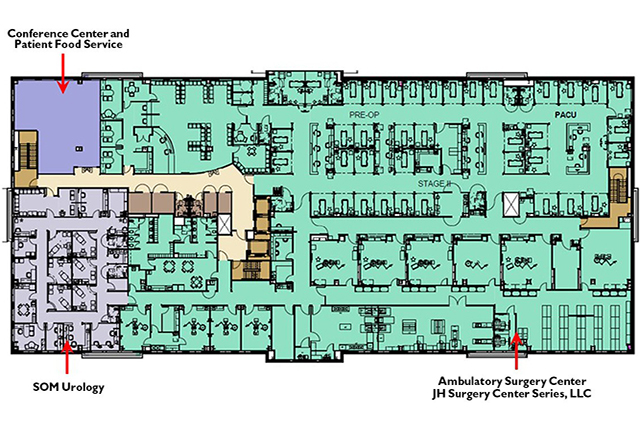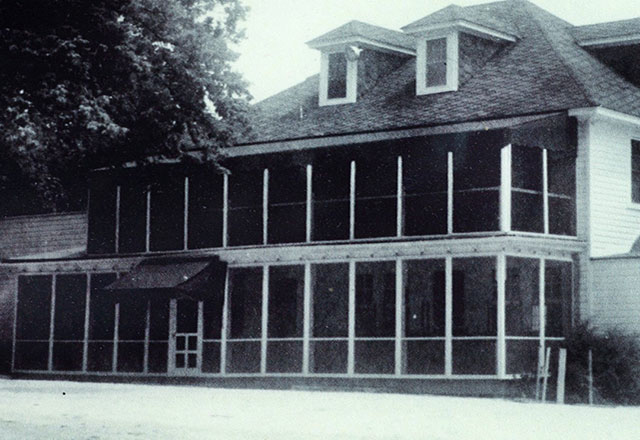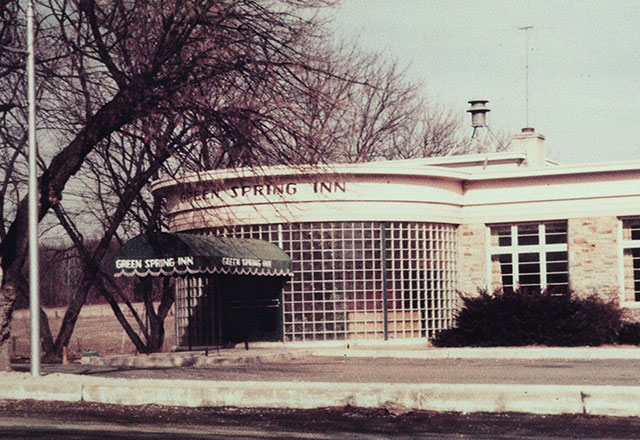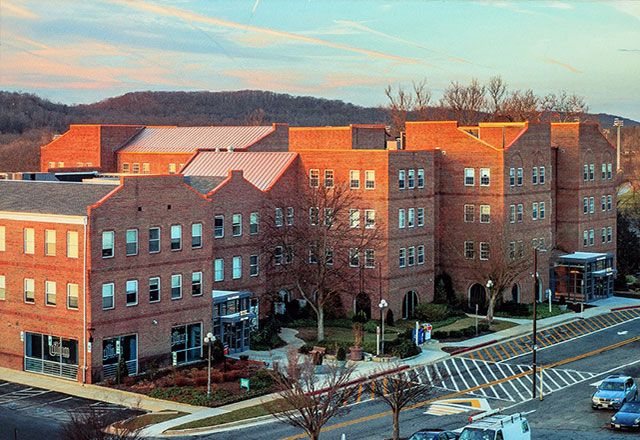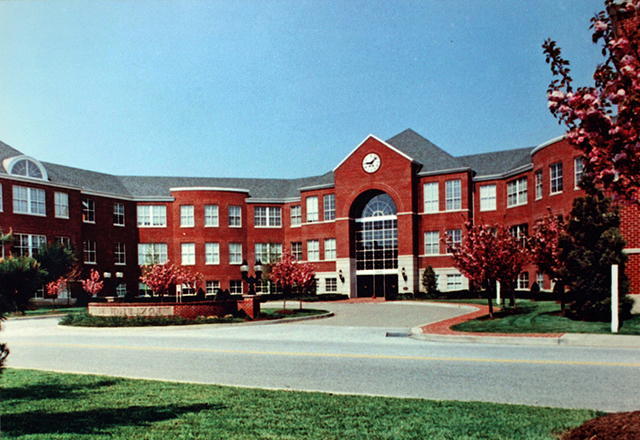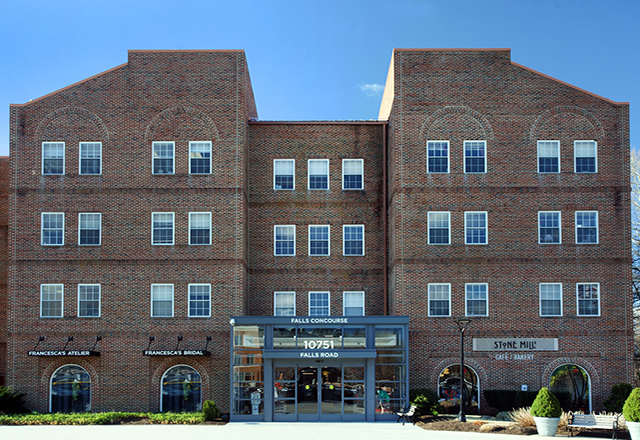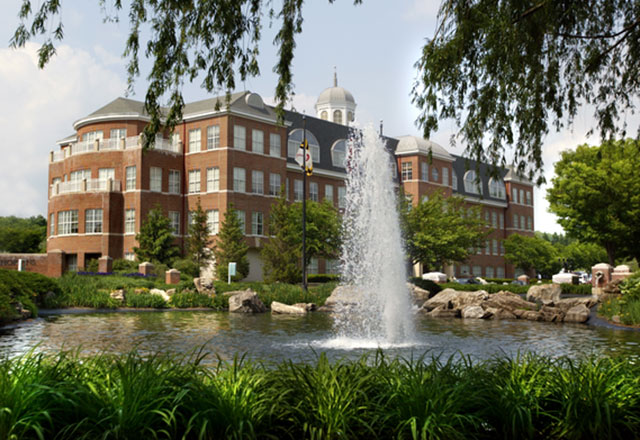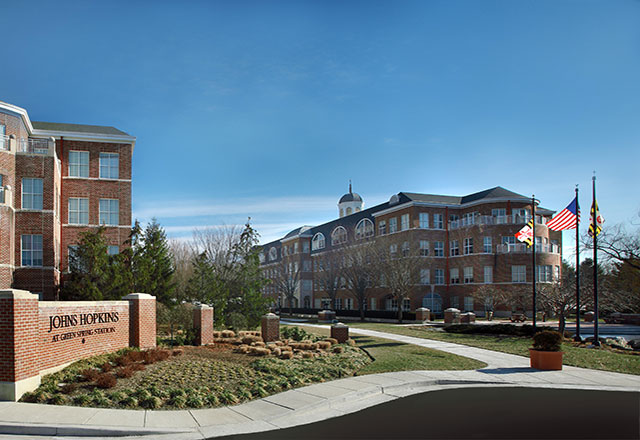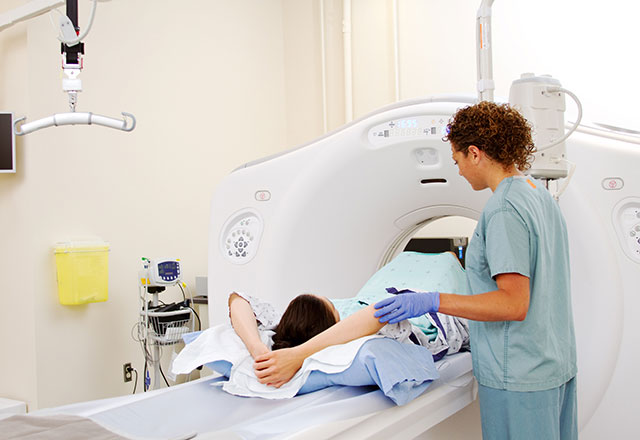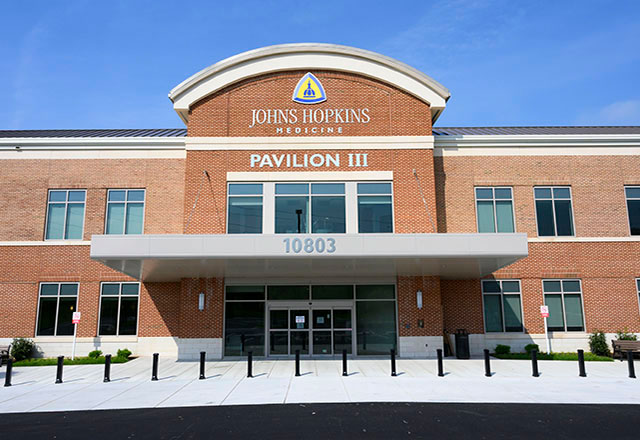Green Spring Station Timeline
Green Spring Station and Johns Hopkins Medicine: A History of Community and Health Care
When Johns Hopkins opened its first offices for medical consultation and diagnosis at Green Spring Station in 1994, the institution created a setting where clinical medicine could grow and thrive. The new location also provided easy access to superior medical care in a suburban setting.
Coinciding with the 25 th anniversary in 2019, the Johns Hopkins Health Care & Surgery Center is expanding to include a sixth building. Surrounded by upscale shops, fine restaurants and oases of natural beauty, Green Spring Station continues to breathe new life into patient care, with more than 40 specialties represented.
“Green Spring Station is a simple concept — for physicians to practice together in a collegial, academic atmosphere. And if my patients’ responses are any indicator, it’s going to be wildly successful.” — Internist Dana Frank, M.D.
-
1800s - 1930s (Image) : A Business Hub for Smiths and Wheelwrights
In its early days, Green Spring Station, located north of Baltimore, is a business hub for smiths and wheelwrights. Part of the property is also home to members of the Cockey family, for whom the Cockeysville area is named.
-
1930s (Image) : Cockey's Tavern: Gatehouse to Green Spring Station
The original Cockey's Tavern also serves as a gatehouse that collects tolls from farmers taking their produce and wares to and from Baltimore City to the south. The building stands today as the gatehouse to Green Spring Station and is a registered historical landmark of Baltimore County.
-
1936 (Image) : Ted and LeRoy Peddy Open Green Spring Inn Restaurant
During the Great Depression, Ted and LeRoy Peddy purchase a two-story restaurant and name it the Green Spring Inn. The Peddy brothers, along with Ted’s son, Tom, continue to develop Green Spring Station into a community destination with many popular local businesses and restaurants.
-
1946 (Image) : Green Spring Inn Rebuilt
Destroyed by fire in 1942, the Green Spring Inn is rebuilt in 1946.
-
1979 (Image) : Joppa Concourse Built
Green Spring Station continues to expand as a community. The Joppa Concourse is built, followed by the Falls Concourse in 1981, offering office and retail space, with an emphasis on boutique and niche businesses.
-
1989 (Image) : Foxleigh Building Opens
The Foxleigh Building opens.
-
December 1992 (Document) : Johns Hopkins Suburban Health Center Initiative Approved
The Johns Hopkins Board of Trustees approves the strategy for the “Johns Hopkins Suburban Health Center” at Green Spring Station. The project is based on an initiative led by Thomas Provost, M.D., internist Dana Frank, M.D. and project director Gill Wylie.
-
June 1993 (Document) : Pavilion I Construction Begins
Construction on the $12 million, four-story pavilion — later to be known as Pavilion I — begins.
-
July - November 1994 (Document) : Johns Hopkins Health Care & Surgery Center at Green Spring Station Launched
Johns Hopkins launches its first major expansion into Baltimore County with the Johns Hopkins Health Care & Surgery Center at Green Spring Station.The first Johns Hopkins patient is seen by gynecologist/obstetrician Eli Timoll, M.D. on July 1, 1994.
- November 13: Johns Hopkins employees preview the facility.
- November 15: Formal ribbon-cutting ceremony takes place.
More than one hundred full-time school of medicine faculty members and over 50 part-time faculty private practitioners focus on diagnosis, consultation and evaluation. Cataract removal is the only surgical procedure done at the facility.
-
January 1, 1995 (Image) : Johns Hopkins Leases the Falls Concourse
With Pavilion I full, Johns Hopkins commits to a long-term lease in the Falls Concourse, an adjacent building. Doctors see 18,000 patients at Green Spring Station in the first full year of operation.
-
May 5, 1995 (Image) : Johns Hopkins Dedicates Pavilion I
Johns Hopkins at Green Spring Station (Pavilion I) is dedicated by the health system’s president, dean and board of governors.
-
January 1996 (Image) : Johns Hopkins Leases Pavilion II
Johns Hopkins commits to a long-term lease for Pavilion II to meet increasing demand. Johns Hopkins faculty members see 40,000 patients at Green Spring Station in the second full year.
-
1997 - 2004 (Image) : Johns Hopkins Adds Services, Practices to Green Spring Station
Johns Hopkins continues to add practices and services, including a linear accelerator for highly focused radiation for cancer treatment, renal dialysis, computerized axial tomography (CAT scan), MRI, laser procedures and rehabilitation facilities.
-
2015 (Video) : Johns Hopkins Lyme Disease Research Center
The Johns Hopkins Lyme Disease Research Center is established under the direction of John Aucott, M.D. , whose clinical research team sees patients at Green Spring Station.
-
2017 (Document) : Neurosciences Consultation and Infusion Center Opens
The Neurosciences Consultation and Infusion Center opens, offering infusion therapy for patients with multiple sclerosis and other conditions.
-
2019 (Image) : Pavilion III Opens
As Johns Hopkins Health Care & Surgery Center celebrates its 25th anniversary, Pavilion III joins Pavilions I and II and the Falls, Joppa and Foxleigh buildings at Green Spring Station, expanding outpatient clinical and ambulatory surgical services. The clinical practices opened in May 2019, and a new ambulatory surgical center is set to open in August.
Pavilion III Layout
First Floor
The first floor will feature a large medical oncology center with infusion rooms, and a new facility for imaging.
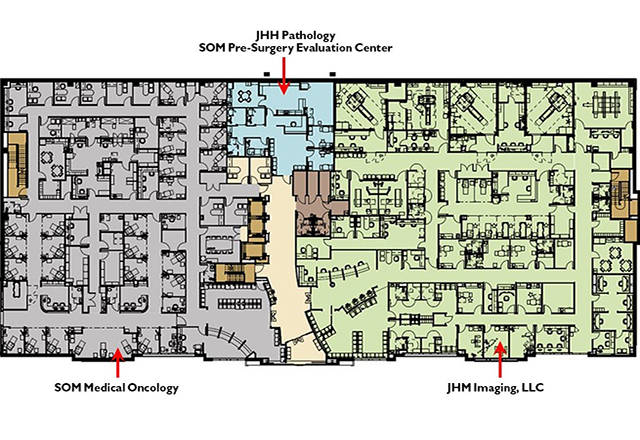
Second Floor
The Musculoskeletal Institute will occupy the second floor, with a fully equipped rehabilitation facility. The departments of facial plastic and reconstructive surgery and otolaryngology will also have offices on the second floor.
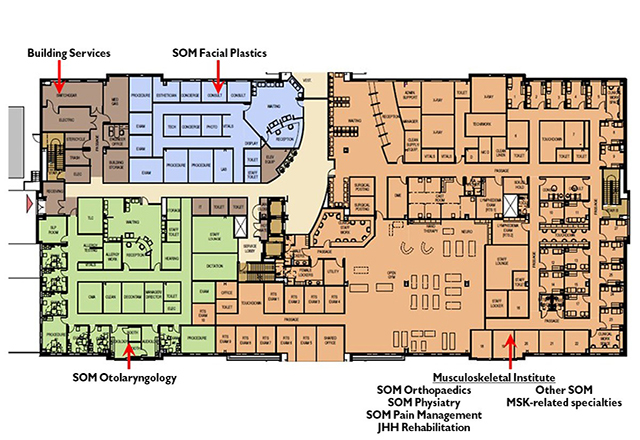
Third Floor
The third floor will house a new ambulatory surgical center, clinical offices for the department of urology, a conference center and food services for patients and visitors.
